Innovative Materials with Complex Applicability †
Abstract
:1. Introduction
2. Materials and Methods
- Analyzing the current situation regarding mortars and polymers used in construction.
- Making rubber mortar recipes with a concentration of 2%, 5%, and 10% by weight of cement and testing them in order to determine their physical and mechanical characteristics.
- Making rubber mortar recipes with a concentration of 2%, 5%, and 10% by weight of cement with an additional casein concentration of 2% by weight of cement. Investigating them by traditional methods and highlighting the contribution of casein.
- Determination of the physical and mechanical characteristics of the standard mortar and all mortar recipes, maintaining the standards in force, and also testing the mortar recipes at 3, 7, and 28 days.
3. Results
4. Conclusions
References
- Cantor (Andres), D.M.; Manea, D.L. Innovative building materials using agricultural waste. Proc. Technol. 2015, 19, 456–462. [Google Scholar] [CrossRef]
- Saikhede, S.R.; Satone, S.R. An Experimental Investigation of Partial Replacement of Cement by Various Percentage of Phosphogypsum and Flyash in Cement Concrete. Int. J. Eng. Res. Appl. 2014, 4, 37–40. [Google Scholar]
- Jumate, E.; Manea, D.L.; Moldovan, D.; Fechete, R. The effects of Hydrophobic Redispersibile Powder Polymer in Portland Cement Based Mortars. Proc. Technol. 2017, 181, 316–323. [Google Scholar]
- Pintea, A.O.; Daniela Manea, D.L. Influence of Natural Polymers upon Cement-Based Plastering Mortars. In Proceedings of the C65 International Conference, Cluj-Napoca, Romania, 15–17 November 2018. [Google Scholar]
- Pintea, A.O.; Manea, D.L. New types of mortars obtained by aditiving traditional mortars with natural polymers to increase physico-mechanical performances. In Proceedings of the International Conference INTER-ENG 2018, Targu Mures, Romania, 4–5 October 2018. [Google Scholar]
- Pintea, A.O.; Manea, D.L. Influence of Natural Organic Polymers upon Plaster Mortar Workability. In Proceedings of the International Conference INTER-ENG 2019, Targu Mures, Romania, 3–4 October 2019. [Google Scholar]
- EN 934-6:2002/A1:2006 Additives for Concrete, Mortar and Paste. Part 6: Sampling, Control and Conformity Assessment. Available online: https://vdocuments.site/sr-en-934-2-aditivi-pentru-beton.html (accessed on 29 November 2020).
- EN 13139:2003 Aggregates for Mortars. Available online: https://standards.iteh.ai/catalog/standards/cen/d1169c31-b23e-41fa-8f1d-cf3a9b0ce8dd/en-13139-2002 (accessed on 29 November 2020).
- STAS 790-1984 Water for Mortars and Concretes. Available online: https://magazin.asro.ro/ro/standard/21638 (accessed on 29 November 2020).
- EN 196-1:2016 Methods of Testing Cement. Determination of Strength. Available online: https://www.en-standard.eu/bs-en-196-1-2016-methods-of-testing-cement-determination-of-strength/ (accessed on 29 November 2020).
- EN 196-2:2013 Method of Testing Cement. Chemical Analysis of Cement. Available online: https://standards.iteh.ai/catalog/standards/cen/47283941-90a2-43dc-8b2c-dea6208712a6/en-196-2-2013 (accessed on 29 November 2020).
- EN 196-3:2016 Methods of Testing Cement Determination of Setting Times and Soundness. Available online: https://standards.iteh.ai/catalog/standards/cen/e4921eca-8101-4261-b066-25d19b9b8e8a/en-196-3-2016 (accessed on 29 November 2020).
- EN 196-4:2007 Methods of Testing Cement. Quantitative Determination of Constituents. Available online: https://standards.iteh.ai/catalog/standards/cen/d55093fb-4c58-46c6-a91c-150121867625/cen-tr-196-4-2007 (accessed on 29 November 2020).
- EN 196-6:2018 Methods of Testing Cement. Determination of Fineness. Available online: https://standards.iteh.ai/catalog/standards/cen/9feaed91-485e-4e0b-93c6-36357e1580ec/en-196-6-2018 (accessed on 29 November 2020).
- EN 197-1:2001. Cement Part 1. Composition, Specifications and Conformity Criteria for Common Cements. Available online: https://standards.iteh.ai/catalog/standards/sist/00e7c857-98b1-4132-b9ec-9cf156a8dfc3/sist-en-197-1-2001-opra2-2006 (accessed on 29 November 2020).
- EN 197-2:2020 Cement—Part 2: Assessment and Verification of Constancy of Performance. Available online: https://standards.iteh.ai/catalog/standards/cen/49c9299e-9123-42eb-92d2-19b6461f41ad/en-197-2-2020 (accessed on 29 November 2020).
- EN 197-3:2001 Cement—Part 3: Composition, Specifications and Conformity Criteria for Low Heat Common Cements. Available online: https://standards.globalspec.com/std/1347120/din-en-197-3 (accessed on 29 November 2020).
- EN 197-4:2004 Cement. Composition, Specifications and Conformity Criteria for Low Early Strength Blastfurnace Cements. Available online: https://standards.iteh.ai/catalog/standards/cen/83a154a8-c2fc-4b4a-a408-8b46d6834132/en-197-4-2004 (accessed on 29 November 2020).
- EN 197-5:2000. Cement. Part 5. Portland-Composite Cement CEM II/C-M and Composite Cement CEM VI. Available online: https://standards.iteh.ai/catalog/standards/cen/69d3b559-4114-43b3-bfed-05787fc839a2/pren-197-5 (accessed on 29 November 2020).
- EN 1338:2003 Concrete Paving Blocks. Requirements and Test Methods. Available online: https://standards.iteh.ai/catalog/standards/cen/c0ceb4fd-ff66-437d-b05c-c62974d4ab41/en-1338-2003-ac-2006 (accessed on 29 November 2020).
- EN 1339:2003 Concrete Paving Flags. Requirements and Test Methods. Available online: https://standards.iteh.ai/catalog/standards/cen/19c0de8e-9430-4961-8d97-a1c6b70d041c/en-1339-2003-ac-2006 (accessed on 29 November 2020).
- EN 1340:2003 Concrete Kerb Units. Requirements and Test Methods. Available online: https://standards.iteh.ai/catalog/standards/cen/84647ce9-386d-4a39-8406-47d56f64692b/en-1340-2003 (accessed on 29 November 2020).
- EN 13748-2 Terrazzo Tiles Part 2: Terrazzo Tiles for External Use. Available online: https://standards.iteh.ai/catalog/standards/cen/db14b22d-212a-4aba-916f-62f32cf64bbe/en-13748-2-2004 (accessed on 29 November 2020).
- EN 14157:2017 Natural Stone Test Methods. Determination of the Abrasion Resistance. Available online: https://standards.iteh.ai/catalog/standards/cen/248b629a-b8ea-4c98-9554-0a5c2355def2/en-14157-2017 (accessed on 29 November 2020).
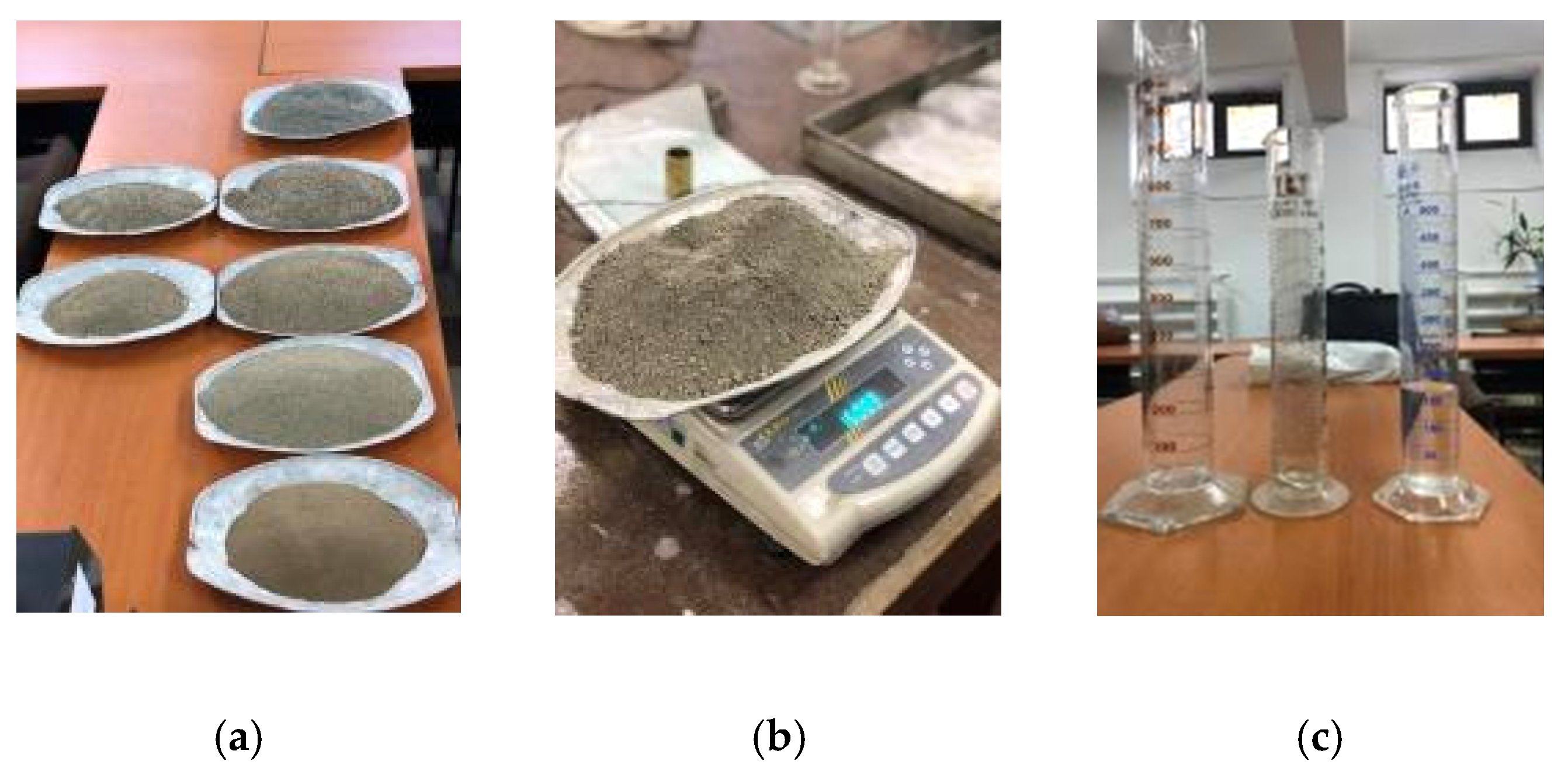
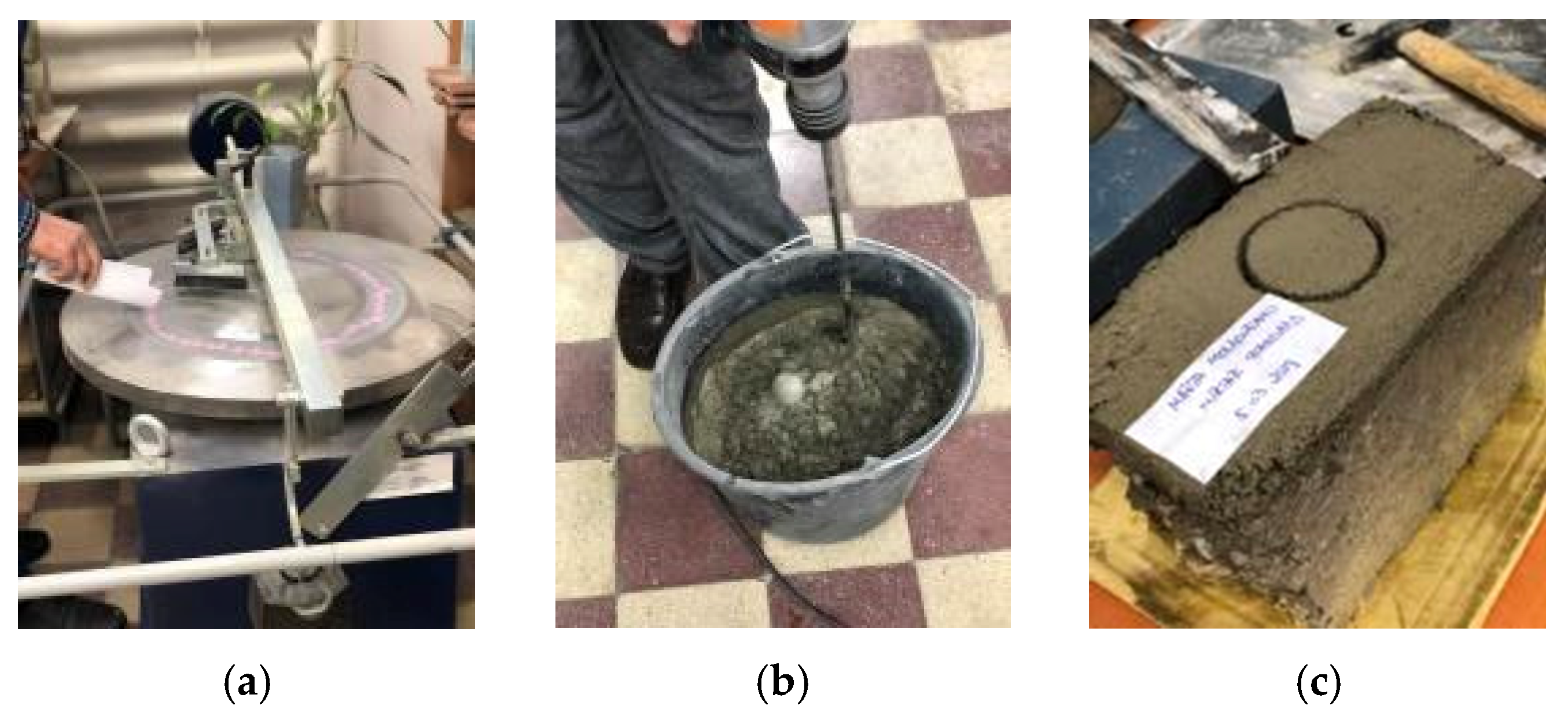
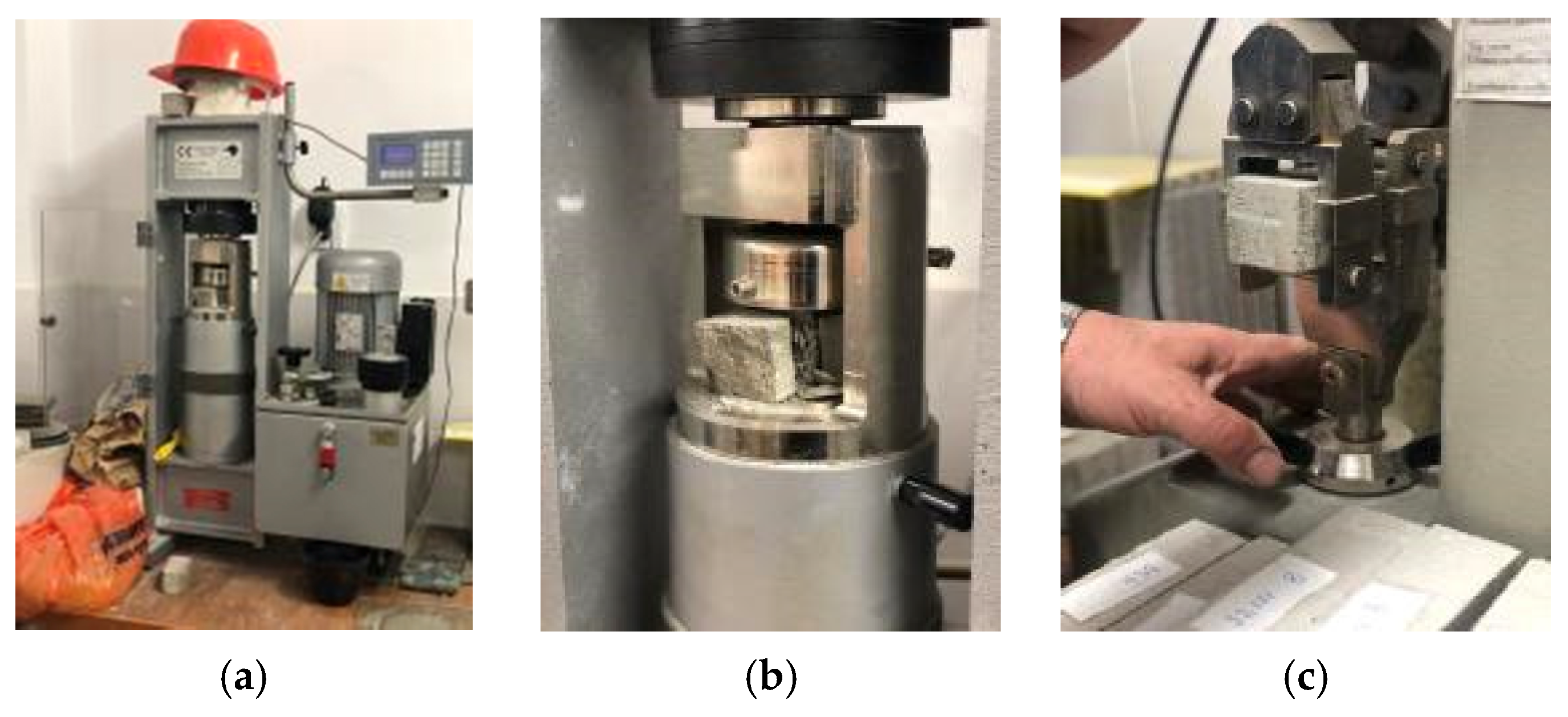
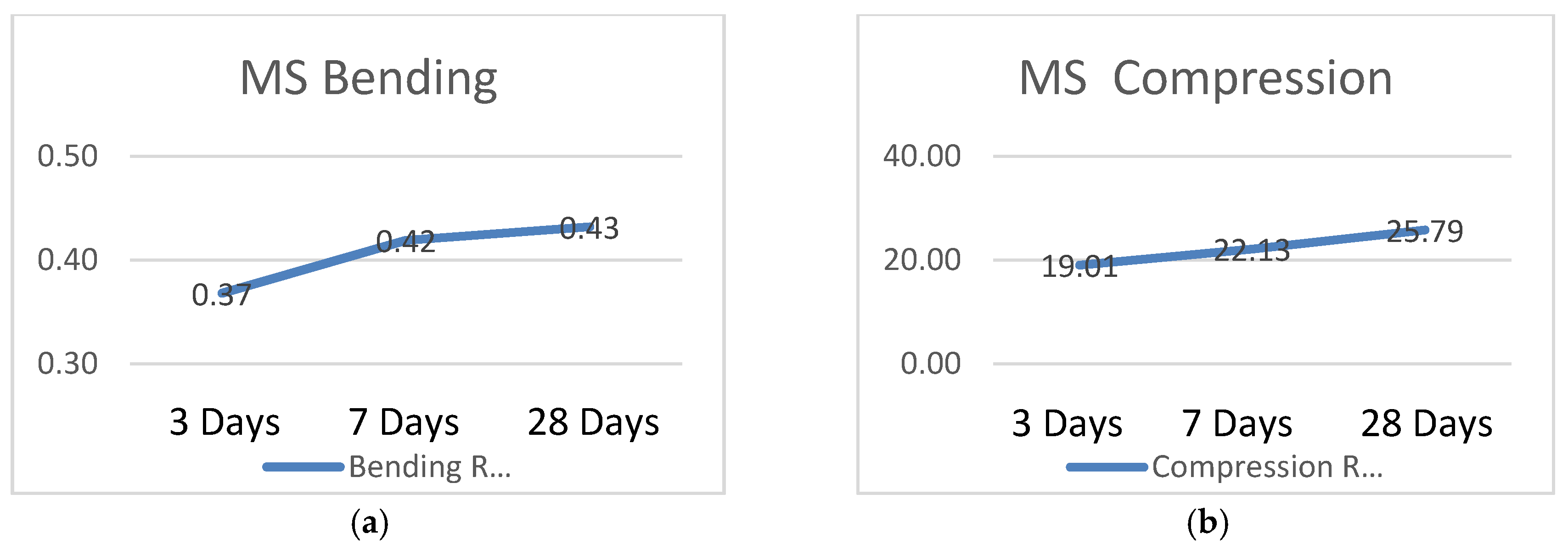
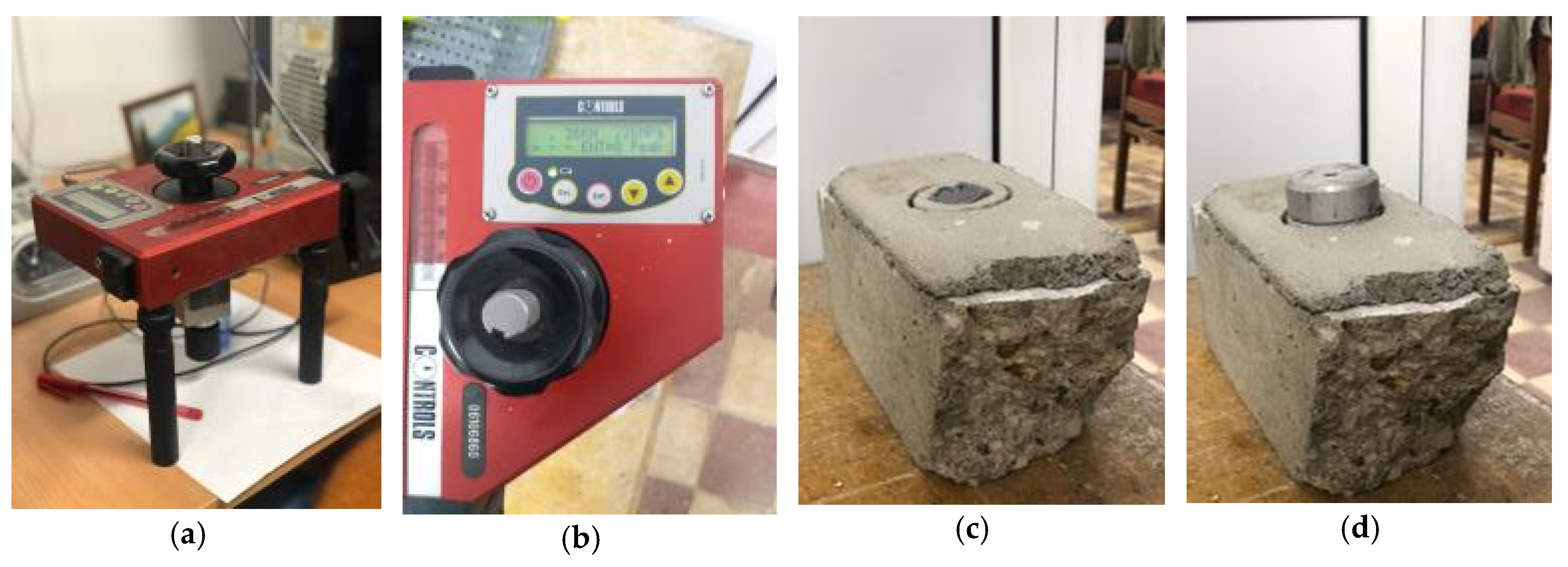
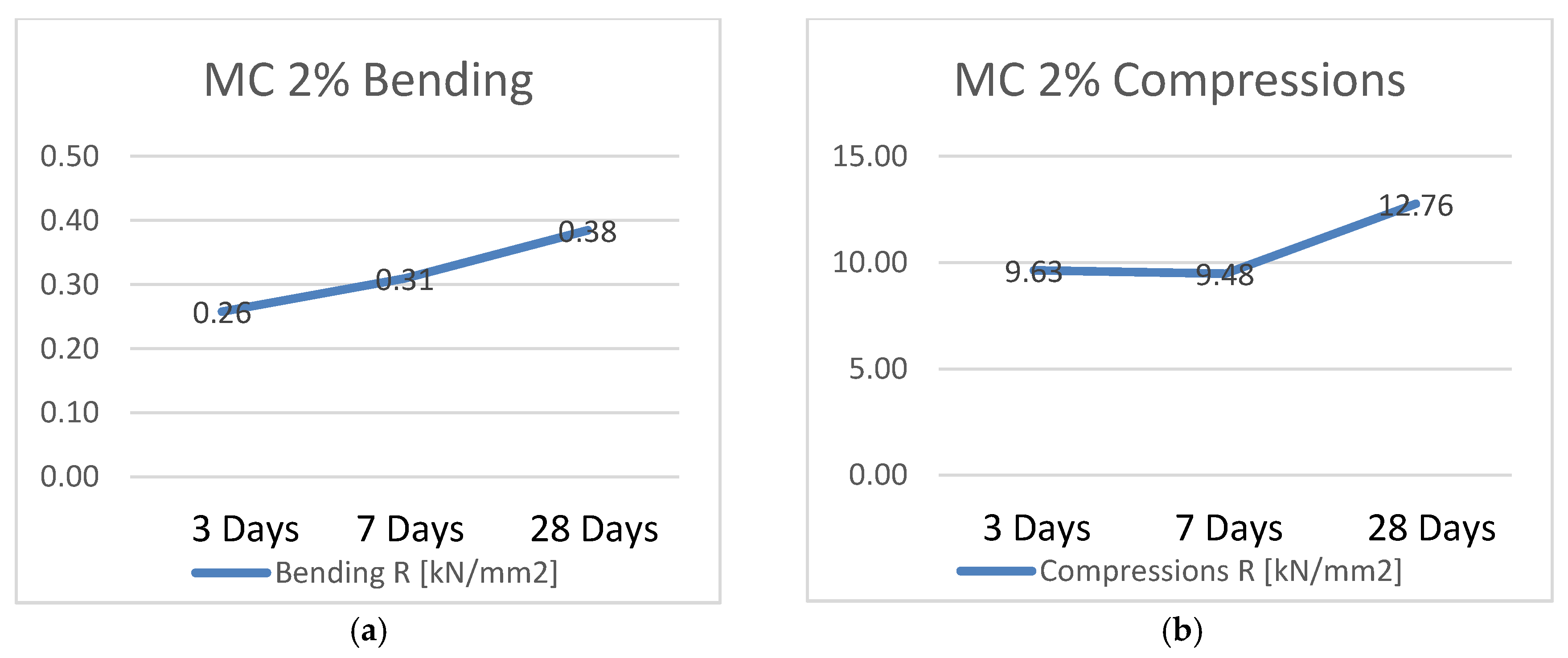

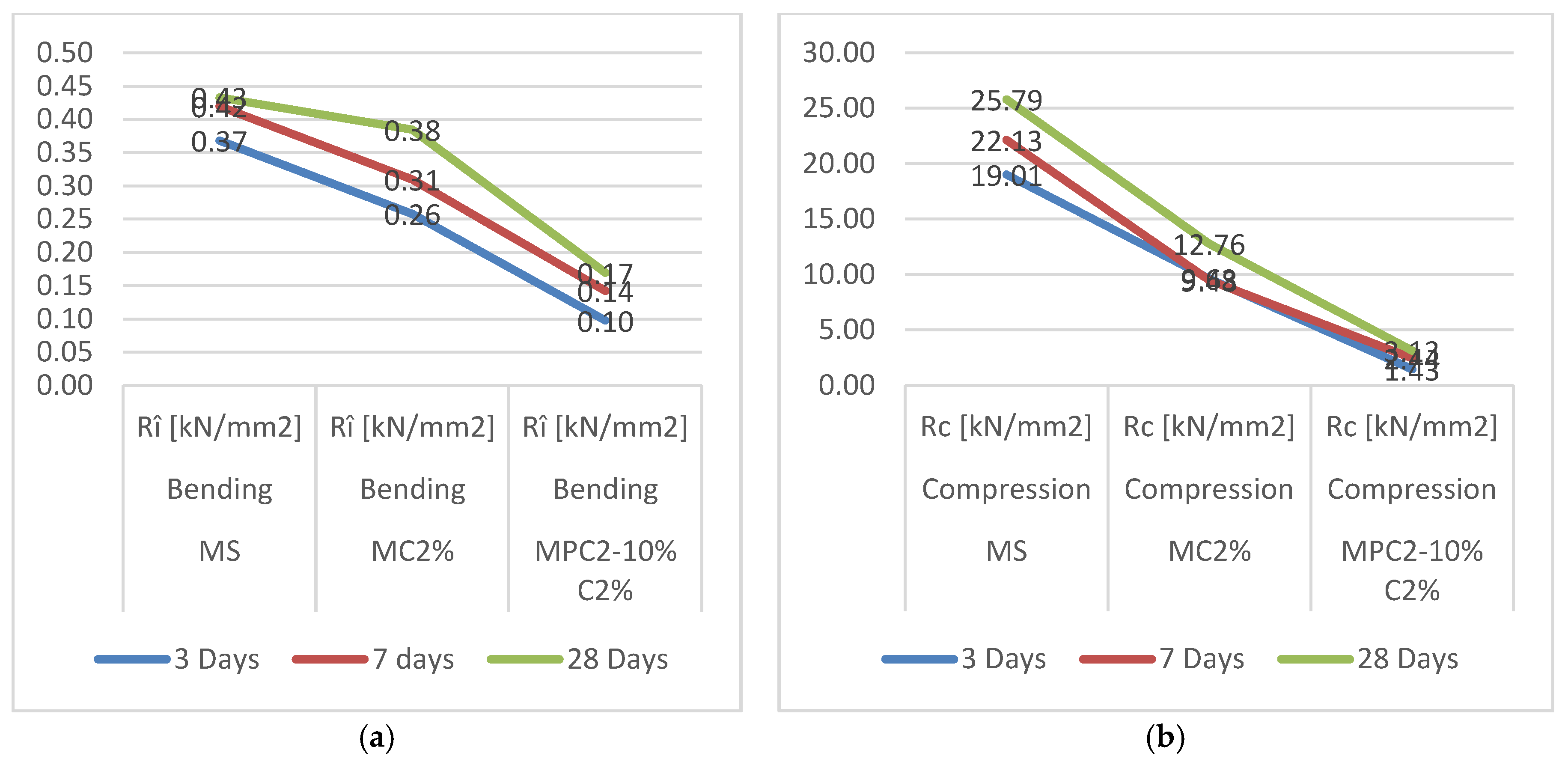
| Abbreviation | Percentage | Detailing |
|---|---|---|
| MS | 2–10% | Standard Mortar |
| MCx% | 2–10% | Standard Mortar with x% Casein Polymer |
| MPCx% | 2–10% | Standard Mortar with x% Rubber Powder and x% Casein Polymer |
| MPCx%Cy% | 2–10% | Standard Mortar with x% Rubber Powder and y% Casein Polymer |
Publisher’s Note: MDPI stays neutral with regard to jurisdictional claims in published maps and institutional affiliations. |
© 2021 by the authors. Licensee MDPI, Basel, Switzerland. This article is an open access article distributed under the terms and conditions of the Creative Commons Attribution (CC BY) license (http://creativecommons.org/licenses/by/4.0/).
Share and Cite
Moldoveanu, M.I.; Pintea, A.O.; Manea, D.L. Innovative Materials with Complex Applicability. Proceedings 2020, 63, 76. https://doi.org/10.3390/proceedings2020063076
Moldoveanu MI, Pintea AO, Manea DL. Innovative Materials with Complex Applicability. Proceedings. 2020; 63(1):76. https://doi.org/10.3390/proceedings2020063076
Chicago/Turabian StyleMoldoveanu, Marta Ioana, Alexandra Olga Pintea, and Daniela Lucia Manea. 2020. "Innovative Materials with Complex Applicability" Proceedings 63, no. 1: 76. https://doi.org/10.3390/proceedings2020063076
APA StyleMoldoveanu, M. I., Pintea, A. O., & Manea, D. L. (2020). Innovative Materials with Complex Applicability. Proceedings, 63(1), 76. https://doi.org/10.3390/proceedings2020063076






